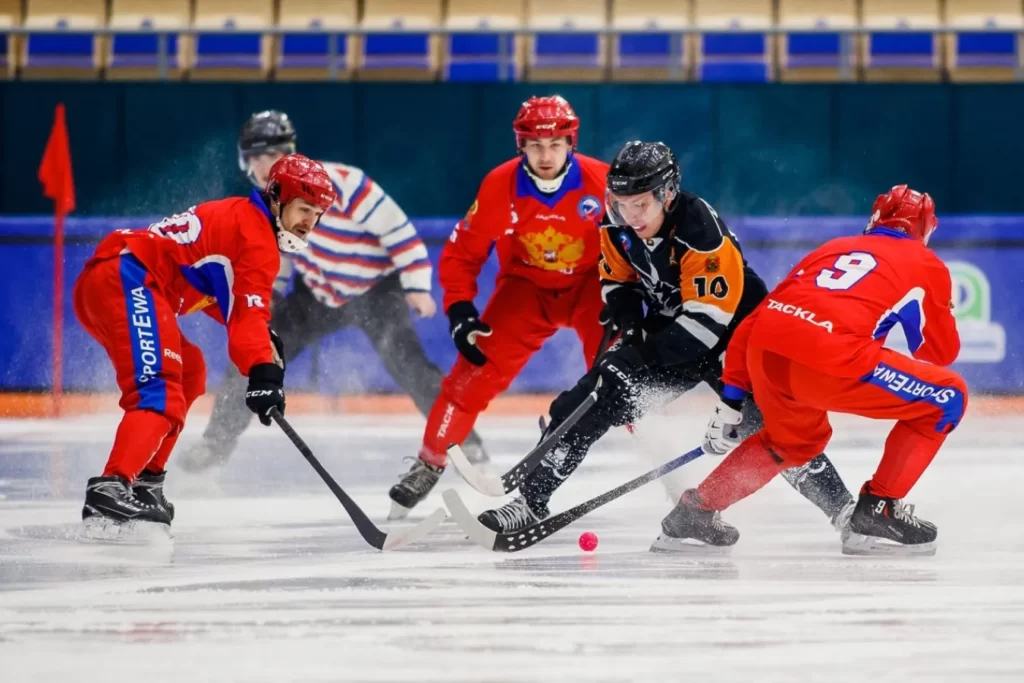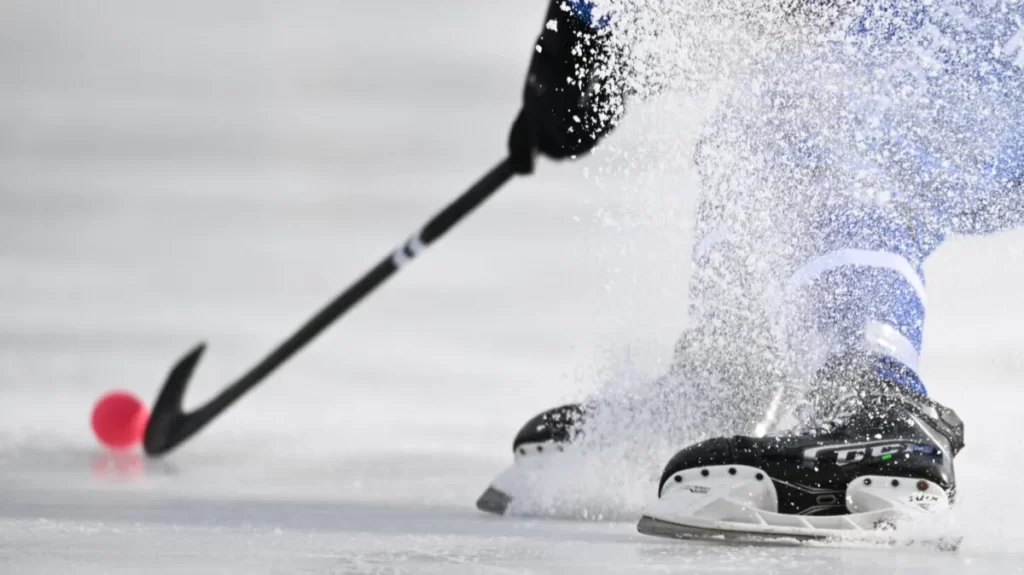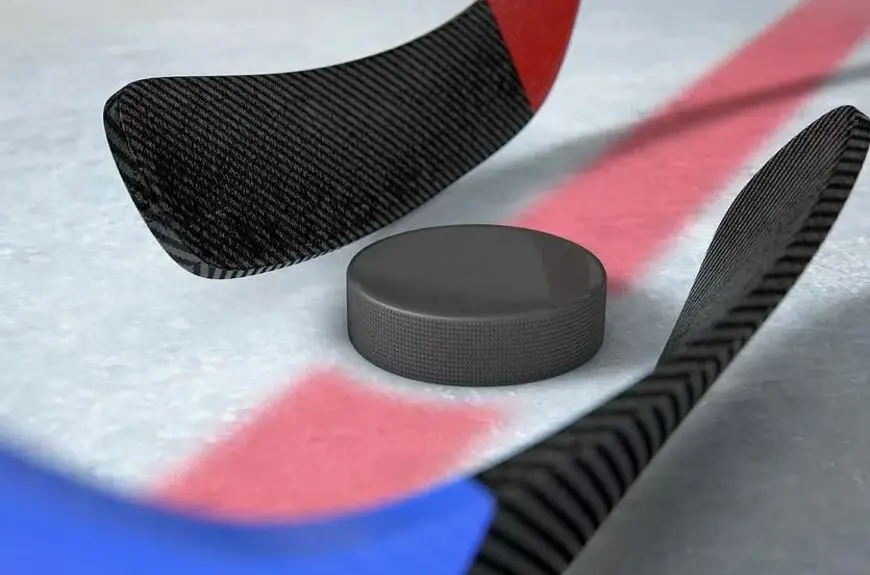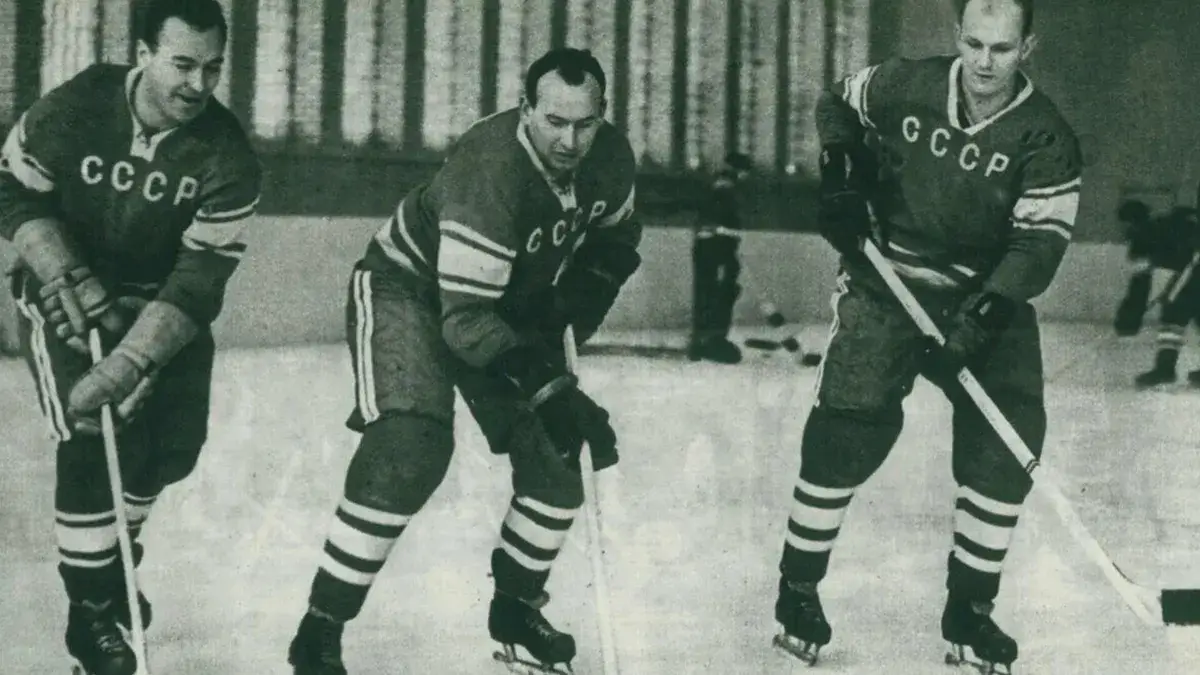Ball hockey is a dynamic and exciting winter sport that combines elements of ice hockey and football. The game is played on the ice by two teams of 11 players, whose aim is to score as many goals as possible into the opponent’s goal. In this article, we will look at the rules of ball hockey in detail.
The basic rules of ball hockey
The format, also known as ‘bendi’, originated more than a century ago in Scandinavia and Russia. The current set of rules developed as early as the 19th century, when the game on frozen rivers and lakes became increasingly popular. Initially, the rules of ball hockey were very different – there were no clear field boundaries and the number of players could vary depending on the mood of the participants and the size of the lake. At the beginning of the 20th century, it was decided to standardise the rules in order to make the game more organised and entertaining.

One of the most important changes in the history of ball hockey was the introduction of a limit of 11 players per team and the establishment of clear rules for the order of throw-ins and penalties. Today, the rules dictate specific pitch sizes, the use of sticks and the application of penalties and free kicks, creating a balance between speed and strategy.
Pitch sizes and equipment – where and with what to play
Ball hockey requires a specially equipped ice rink, which according to the rules is 90-110 metres long and 45-65 metres wide. This huge surface allows athletes to develop very high speed and outwit their opponents with strategic manoeuvres. The hockey pitch is divided into several zones: The centre line divides the pitch into two halves, while the goal is a semi-circular area with a radius of 17 metres, where the most exciting moments take place.
The equipment is another important component. The hockey stick in Bendi is different from the usual hockey stick. It has a curved end, which helps to control the ball better. The stick is made of light but strong wood, which makes it easy to manoeuvre. The ball itself weighs around 60 grams and is made of luminous plastic so that it is easy to see on the ice.
Referees and penalties – how to referee a game correctly
 When it comes to refereeing, every detail counts, as the game is played at breakneck speed and any mistake can cost a team victory.
When it comes to refereeing, every detail counts, as the game is played at breakneck speed and any mistake can cost a team victory.
Refereeing rules for ball hockey
The work of the referee requires the utmost attention and a high reaction speed. The rules in ball hockey include several important points such as enforcing the rules in the goal area, monitoring fouls and awarding penalties and free kicks. The game is officiated by three referees, the head referee and two assistant referees, who each have their own duties and areas of control on the pitch:
- Offside control;
- Awarding of free kicks;
- Time control;
- counting fouls;
- Maintaining order in the goal area;
- Deciding controversial situations.
The head referee monitors the overall dynamics of the game, while the side referees help to control offside positions and offences on the flanks. This division of duties keeps the pace of hockey high while ensuring fairness and compliance with the rules.
Penalty kicks and free kicks: Rules and technique
Penalty kicks in ball hockey are awarded in situations where a team has infringed the rules in its defence zone. The player taking the penalty kick is 12 metres from the goal and only the goalkeeper can attempt to stop the ball. The execution technique requires clarity and strength – the ball must be steered as close as possible to the corner of the goal so that the goalkeeper has no time to react.
Free kicks in ball hockey are taken when the offence has been committed in another part of the pitch. The players of the team awarded the free kick are close to the ball, while the defenders must be no closer than 5 metres away. The technique involves three important steps:
- The stick should be at a 45-degree angle to the ice to ensure optimal contact with the ball and to be able to control it even at high speeds. The correct angle helps to reduce vibrations and maintain balance on impact, which is particularly important in tense moments of the game.
- Aiming – the player carefully assesses the formation of the defenders, analyses their possible actions and chooses the best direction for a pass or a shot to minimise the risk of being intercepted. It is important to consider not only the opponent’s current position, but also their speed and direction of movement in order to anticipate where a space will open up.
- Powerful and accurate shooting – it is not only important to shoot the ball, but also to direct it in a way that creates a favourable position for the team, whether to continue the attack or to create a potentially dangerous moment. The shot should be taken with all players in position to maximise the chances of a successful moment and allow for a subsequent pass or direct approach to goal.
Tactics and strategy: How to win?
Winning in ball hockey is not just about luck, it is also about hard work, strategy, adherence to the rules and the ability to see the field one step ahead. Every hockey player, every pass, every manoeuvre is important here.
Basic tactics in ball hockey
Depending on the strength of the opponent and the style of play, teams use different strategies. One of the most popular is the ‘counter-attacking style’, in which the athletes focus on defence and then quickly switch to attack in order to exploit the opponent’s mistakes. This tactic makes it possible to optimise the use of space on the hockey pitch and change the pace of play quickly.
Another effective strategy is ‘attacking from the wings’. Players on the edges of the field often have more freedom of action and can create dangerous moments for the opponent. The Russian team Yenisei Krasnoyarsk, for example, has repeatedly demonstrated its mastery of this tactic, giving it a numerical advantage in attack.
Conclusion
 Ball hockey is very interesting, also due to well thought-out rules. Study the peculiarities of the sport discipline in more depth if you want to learn to play well.
Ball hockey is very interesting, also due to well thought-out rules. Study the peculiarities of the sport discipline in more depth if you want to learn to play well.

 en
en  ru
ru  de
de  ar
ar  es
es  hi
hi  fr
fr  nl
nl  it
it  pt
pt  el
el 



